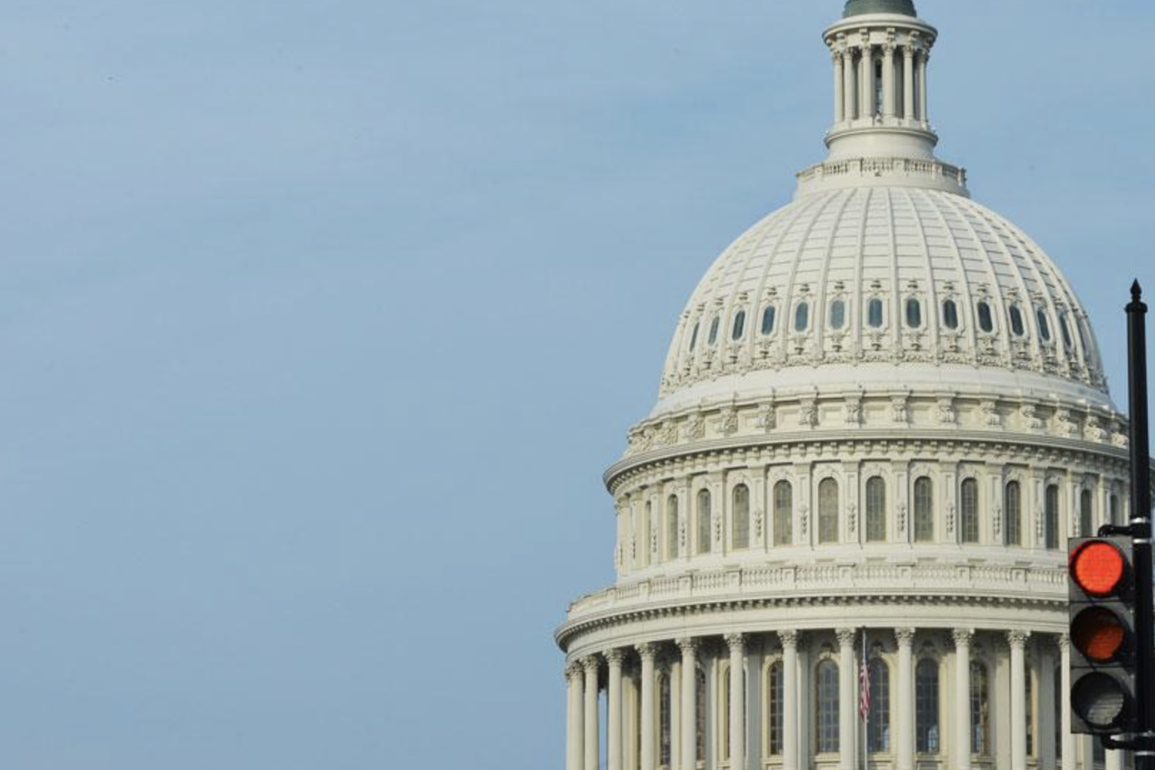The U.S. federal government shut down on Oct. 1, 2025, after Congress failed to pass appropriations legislation before the fiscal-year deadline. That routine-seeming procedural failure ripples far beyond Washington: for a global technology industry already juggling tighter capital markets, supply-chain strain and a contested policy landscape, the shutdown threatens to stall deals, slow innovation and scramble hiring plans—especially if it lingers.
This is not just a US political story. The world leans on U.S. regulators, research agencies and contracting budgets in ways that affect the timing, risk and economics of tech everywhere. According to Forrester’s Global Tech Market Forecast, 2024 to 2029, the industry is projected to grow 5.6% in 2025, reaching $4.9 trillion, crossing the $5 trillion mark in 2026, and topping $6 trillion by 2029.
But what does this shutdown mean, what happens if it persists, and what can global tech companies, from startups hunting capital to multinationals with federal contracts, expect?
The immediate choke point: the IPO and regulatory pipeline
One of the most visible near-term effects is a freeze in the IPO pipeline. The Securities and Exchange Commission has moved to an emergency staffing model, furloughing most of its workforce and keeping only the skeleton staff necessary for emergency enforcement and market surveillance.
That means routine IPO reviews, many ETF approvals and certain rulemaking activities pause until appropriations resume. The practical implication: companies hoping to list now face delays that could push deals into different quarters or change pricing dynamics.
“A shutdown gives investors a reason to think twice on whether to buy into new deals at a time of heightened political uncertainty,” one market analyst told Reuters ahead of the funding lapse — a succinct way to capture how process risk morphs into market risk. Equity bankers worry that a long delay could sap momentum in markets that had only recently revived.
For global tech, that’s consequential. Many non-U.S. companies elect to list in the United States for depth and valuation; pause the SEC and you can alter the calculus for where and when they float.
Venture-backed startups that had pencilled in exits this quarter could see terms reset or M&A alternatives re-priced. Reuters and others report that several high-profile listings were at risk of being stalled by the halt in SEC processing.
Markets, data and monetary policy: more fog for investors
A shutdown also interrupts crucial economic reporting. Bureau of Labor Statistics releases, trade figures and other data can be delayed or curtailed—information central to central banks and markets. Economists warn that delays to jobs and inflation data can complicate the Federal Reserve’s reaction function, increasing uncertainty over interest-rate paths.
As Moody’s Analytics’ Mark Zandi has noted, a prolonged shutdown could deepen economic damage by hampering policymaking and denting confidence. Even if a short shutdown leaves GDP effects small, uncertainty itself raises risk premia across asset classes.
For tech companies, this translates into a higher cost of capital and greater volatility around financing rounds and strategic transactions.
VCs and public investors price in uncertainty; when macro signals are missing, they become more conservative. A long shutdown could therefore make the gap between VC expectations and public-market valuations wider, slowing exits and dampening late-stage financings.
Federal contractors, defense tech and procurement delays
The U.S. federal government is not only a regulator; it is also a customer. Thousands of technology firms—from cloud services and cybersecurity vendors to chip suppliers and aerospace contractors—depend on federal procurement pipelines.
When appropriations lapse, agencies stop issuing new contracts and in many cases cannot process modifications, payments or oversight tasks. Federal contractors brace for cash-flow constraints and operational disruption.
That matters globally. Defense and government tech suppliers often run integrated supply chains that include foreign plants and partners; a funding freeze in Washington can ripple through those networks, delaying orders, production and certification work.
For example, delays in FAA operations or safety-certification processes can slow commercial-space launches or aircraft-related tech rollouts. Reuters and industry trade outlets have flagged the exposure of contractors and the risk of a “destabilized” contracting ecosystem if shutdowns are recurrent or prolonged.
Research, grants and the long tail of innovation
The United States funds a disproportionate share of global basic research through agencies such as the National Institutes of Health (NIH), the National Science Foundation (NSF), and Department of Energy labs. A shutdown typically halts new grant awards, slows peer review and pauses program launches.
While existing grants often continue to be paid out in the short term, the lack of new awards and pause in administrative support can delay projects, hiring and collaborations. Over time, repeated interruptions erode workforce pipelines—postdocs, grad students and early-career researchers—who form the talent base for commercial spinouts.
Science and research outlets warn that the cumulative effect matters: missed deadlines, delayed data collection and slower translational work push back commercialization timelines for biotech and deep-tech firms.
A Nature analysis and reporting from Science have documented how funding turbulence and earlier budget cuts have already weakened certain research fields; a shutdown adds another layer of delay and uncertainty.
Talent, visas and hiring freezes
Global tech firms routinely rely on U.S. immigration processes—H-1B petitions, Labor Condition Applications and E-Verify—to hire skilled workers. During a funding lapse, some Department of Labor functions and E-Verify access may be limited or offline depending on contingency plans, complicating new hires, renewals and internal transfers.
Immigration-law firms and HR specialists warn that even short administrative delays can scramble onboarding schedules for international employees and affect the timing of large engineering hires.
Firms that have built hiring pipelines around timely adjudication (for example, to scale AI teams or data science groups) may have to delay projects while they await approvals. For international companies with U.S. operations, this raises the trade-off between local investment and the risk of administrative bottlenecks.
Consumer-facing regulation and enforcement gaps
Several U.S. agencies that police tech markets—FTC (privacy and competition), Department of Commerce (export controls), and CFTC—scale back non-essential functions in a shutdown.
The FTC, for instance, warned that some consumer complaint reporting and anti-fraud channels are unavailable, and that merger reviews could slow. That creates temporary regulatory arbitrage: transactions that might otherwise face speedy scrutiny may face delays, while enforcement momentum around new tech risks can sputter.
For large platforms and fintech firms, those pauses can have mixed effects. A delayed merger review might let a deal quietly proceed through negotiations, but the legal and compliance tail risks persist—enforcers resume full operations when funding returns and could reopen inquiries. The uncertainty also complicates counsel and board decisions: do you close now or wait for clarity?
Global signalling and geopolitical consequences
Beyond process risks, shutdowns send a reputational signal about U.S. political stability. Investors and foreign governments notice: repeated budget brinkmanship erodes confidence in the U.S. as a predictable partner and can influence long-term decisions on where to locate R&D or manufacturing.
Analysts caution this matters to big strategic tech flows—from semiconductor fab investments to cloud region decisions made by hyperscalers—because firms weigh political risk alongside tax and labor costs. European credit agencies and global investors warned that a prolonged shutdown worsens perceptions of U.S. governance and could pressure funding flows.
Samuel Kerr, cited in Reuters coverage, encapsulated the investor mood: “A shutdown gives investors a reason to think twice on whether to buy into new deals at a time of heightened political uncertainty.” That caution can reshape deal timing across borders.
Startups, VCs and the fundraising treadmill
Startups are sensitive to calendar risk. A paused IPO market, slowed M&A, delayed government grants, and rattled investor sentiment create a perfect squeeze: companies that needed a public exit or secondary to provide liquidity for employees may now face valuation resets.
Venture partners told reporters they’d become more conservative in committing new capital if macro uncertainty persists. For growth startups that depend on predictable capital windows, a multi-week shutdown can change run-rate math and force operational retrenchment.
That dynamic is especially acute for companies whose customers include state agencies, hospitals, or universities—real clients that themselves may be grappling with interrupted federal funding. When customers freeze spending, startups with narrow cash runs can be pushed into hard choices.
Supply chain and certification slowdowns
Technology manufacturing depends on certification and regulatory approvals: from aviation parts and commercial-space licensing to safety checks for medical devices. Some of those functions are concentrated in federal agencies or rely on them for central guidance. When staffing drops, approvals slow.
Reuters reported that FAA furloughs would affect thousands of employees and warned that safety certification work continues but under strain, a reality that can delay product launches and international logistics for hardware makers.
For hardware vendors juggling global production and launch timetables, those delays increase inventory risk and the cost of managing cadence across markets.
What a prolonged shutdown would look like
Short shutdowns tend to be painful but manageable. Historical data show markets often quickly recover once funding is restored. But economists warn that a long shutdown does real damage: lost wages, paused procurement, delayed data flows and, crucially, an erosion of institutional capacity that can take months to reverse.
Mark Zandi and other macroeconomists have argued that weeks of shutdown activity reduce quarterly GDP growth and complicate Fed decisions—effects that have knock-on consequences for the tech sector’s financing and consumer demand.
If a shutdown extends for multiple weeks, the risk profile for global technology investment shifts materially: higher risk premia, slower funding, paused government R&D investments, and delayed certification and procurement all become more than a nuisance—they become an input into strategic planning.
Who benefits? Who loses?
Some investors who trade on volatility will find opportunities in market dips. Private capital buyers may use pauses in public markets to revisit private deals. Firms that compete on regulatory lag — for instance, foreign cloud providers not reliant on U.S. government contracts — may briefly outcompete U.S. incumbents for non-federal customers.
Small and mid-sized federal contractors, early-stage IPO hopefuls, legal and regulatory advisers, and workers dependent on timely visa and immigration services bear the brunt immediately. Consumers who rely on FTC reporting tools or federal consumer protection programs are also disadvantaged. Reuters, the SEC and the FTC have all recorded operational slowdowns.
If the shutdown is brief, history suggests markets and projects “look through” the interruption and recover. But if it drags on, it risks eroding confidence in the U.S. as a predictable centre for technology governance and financing. European rating agency Scope warned the shutdown could hurt the U.S. credit profile; credit instability raises borrowing costs for large infrastructure projects — from data-centre campuses to fibre builds — and that matters globally.




